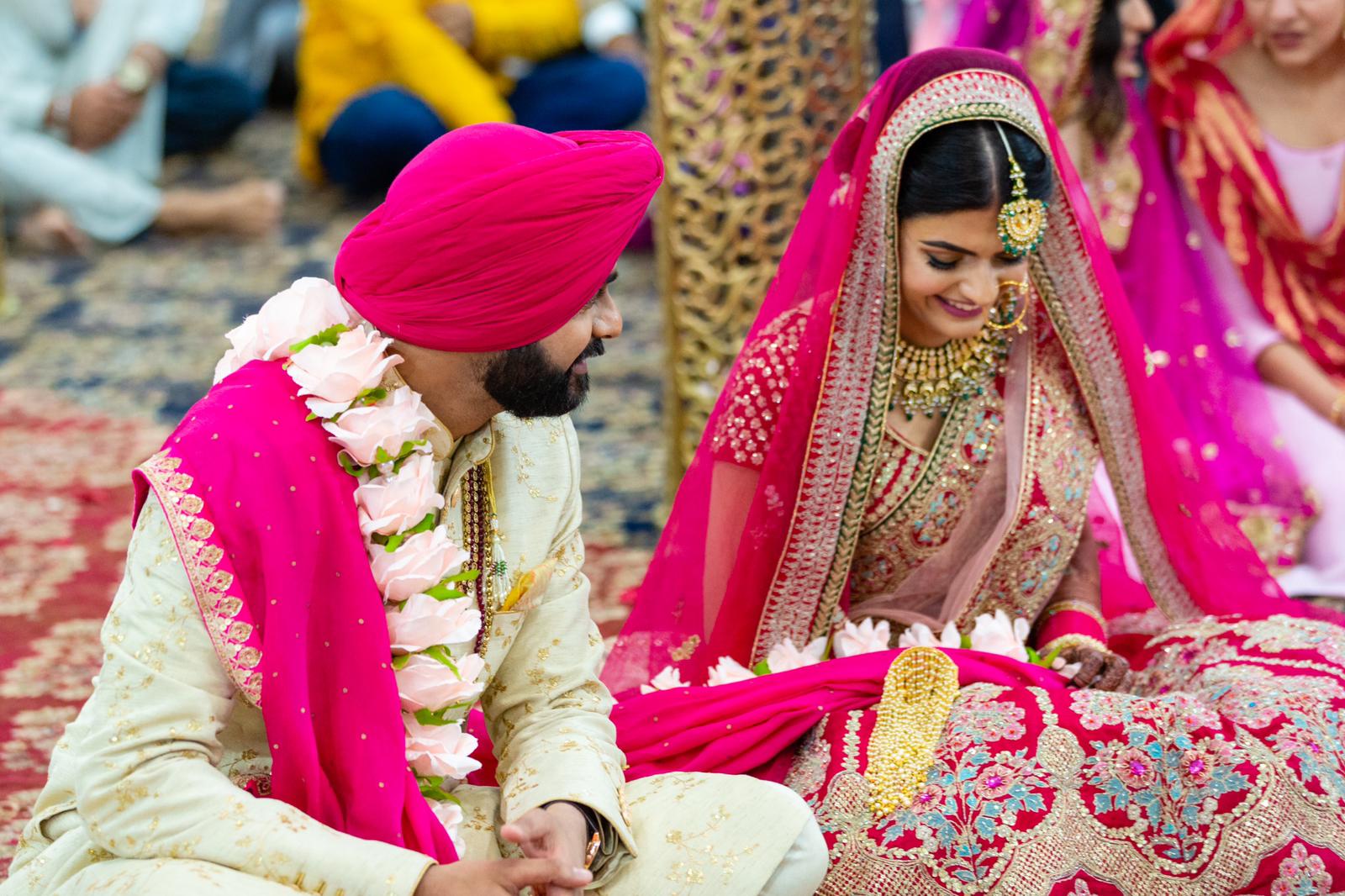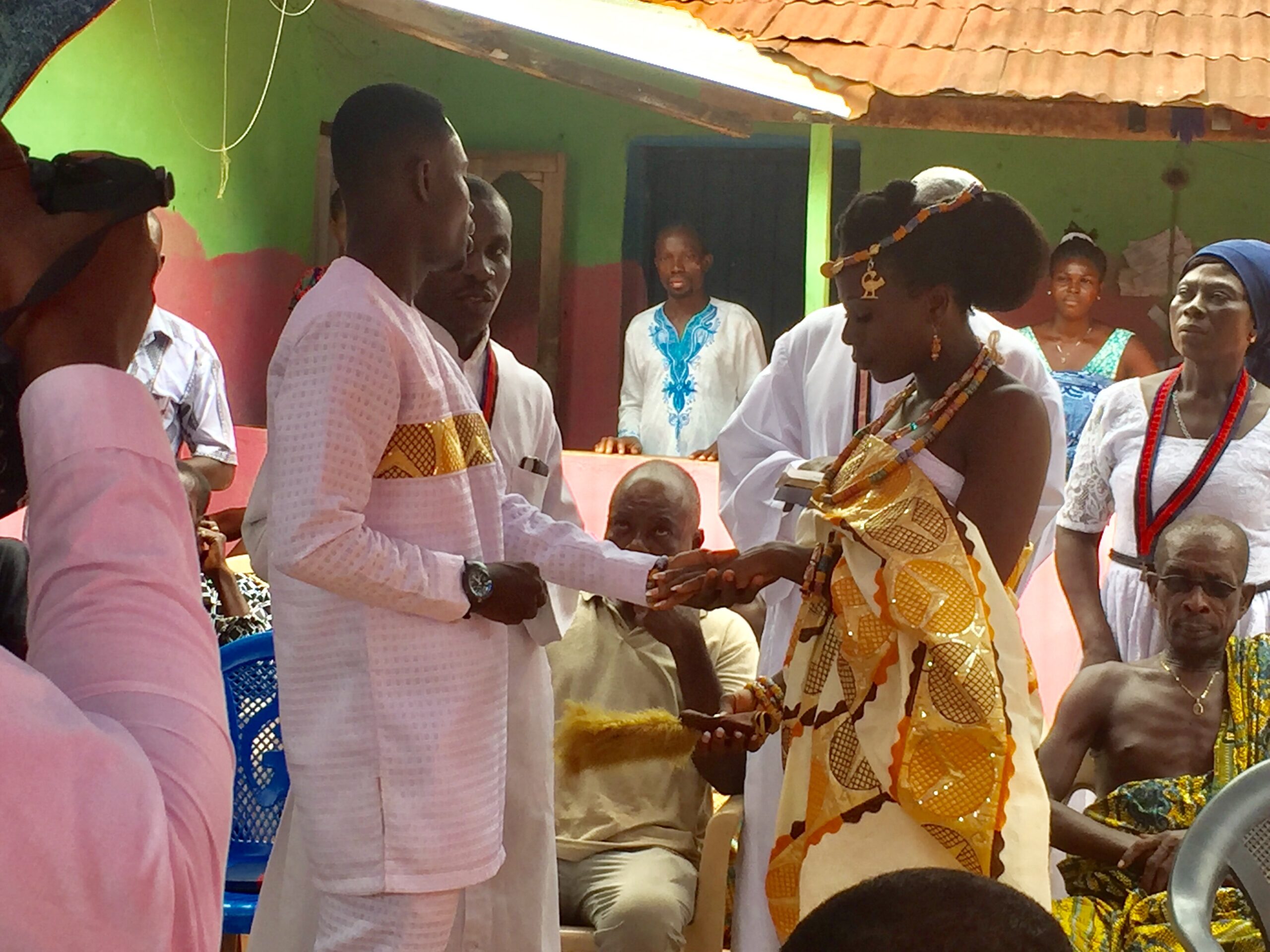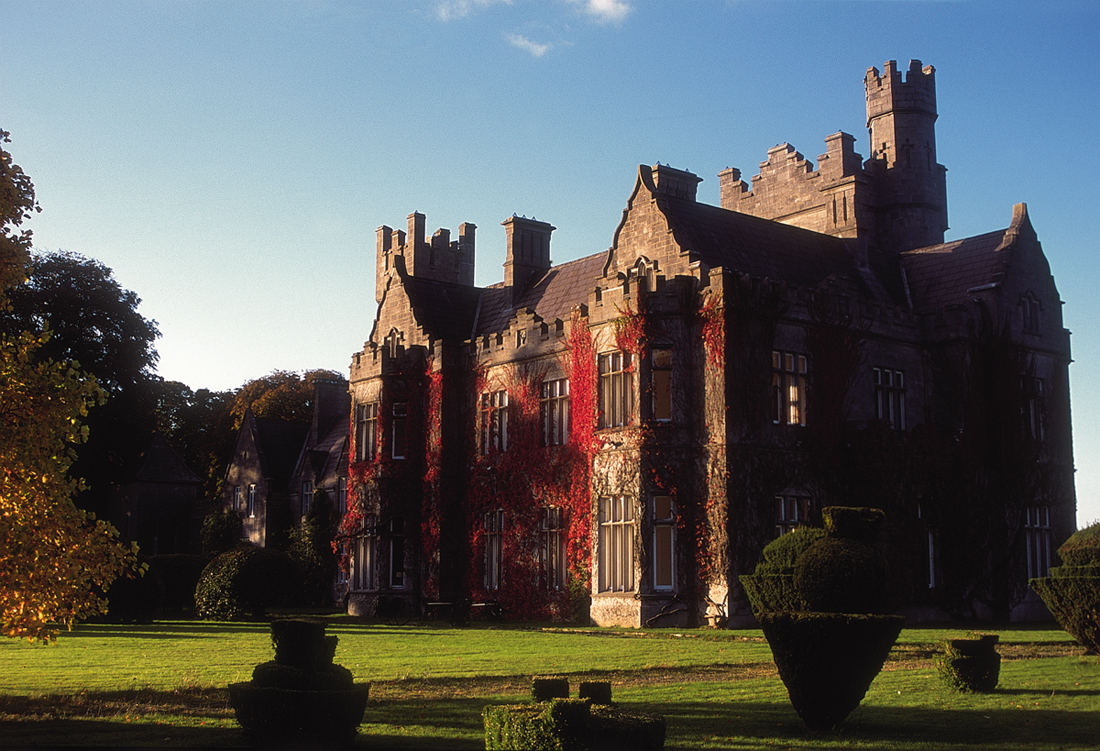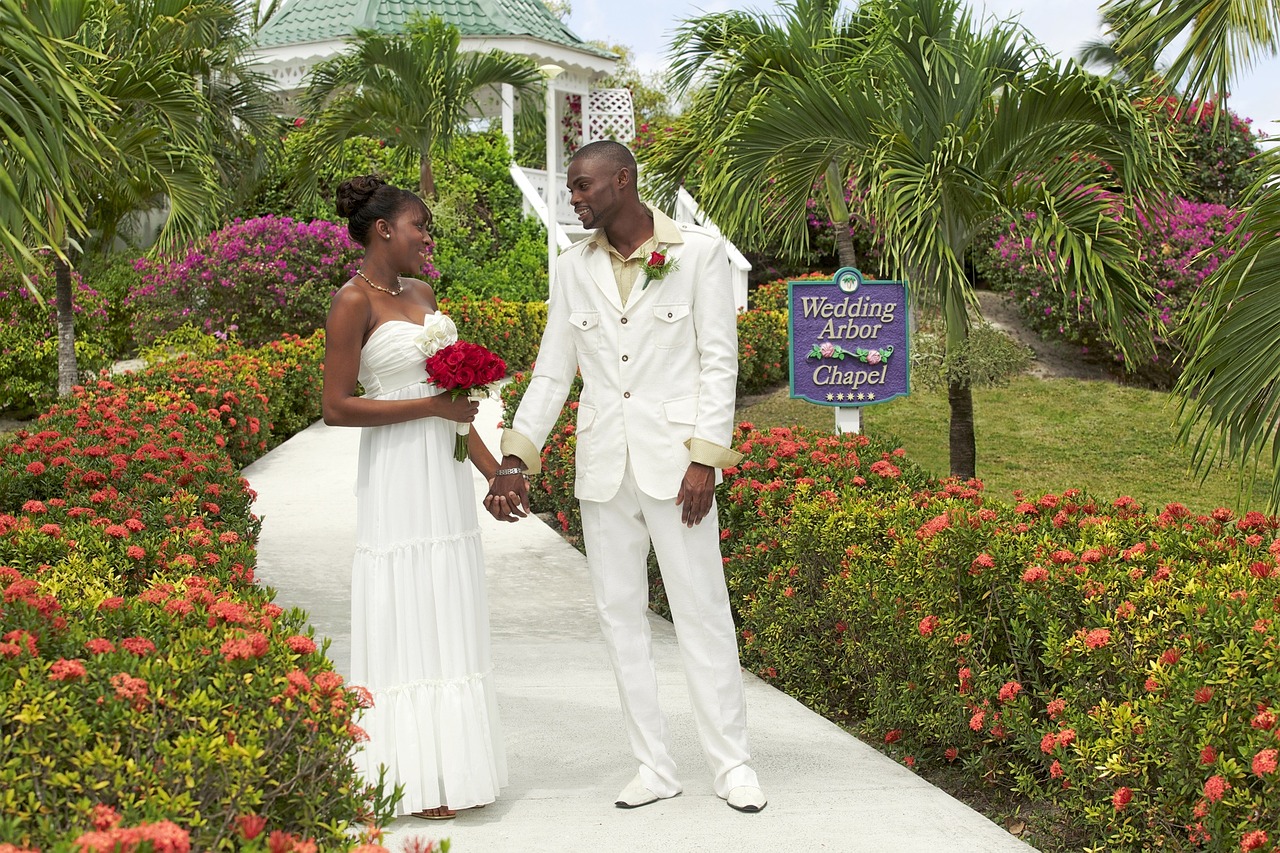Let’s embark on a colorful and joyous journey as we explore the vibrant culture of Punjabi weddings in India. This grand celebration is a unique blend of customs, traditions, and a whole lot of fun. These are not just simple ceremonies but a carnival that encompasses all spectrums of emotions, from tears of joy to ecstatic dance moves. With their characteristic flamboyance, these weddings are the embodiment of Punjabi culture in all its glory.
Punjabi weddings usually take place in Punjab, a state in the northern part of India known for its agricultural richness and cultural vibrancy. The event’s organizers are typically the families of the bride and groom, making it a family affair brimming with close-knit relations and a lot of love. If you want to witness this event, you may have to befriend a Punjabi family first, as tickets are not sold for this personal occasion. However, there are wedding tourism packages available that will allow you to experience the grandeur of a Punjabi wedding.
A Colorful Prelude: The Pre-Wedding Rituals
To understand the depth of Punjabi weddings, it’s essential to begin at the starting point – the pre-wedding rituals. These customs set the tone for the wedding, introducing guests to the flamboyant colors, traditional music, and joyous dancing that define Punjabi weddings.
The first ritual, known as the “Roka” or “Thaka”, marks the commencement of the wedding process. This ceremony is an exchange of gifts, sweets, and good wishes between the two families, signifying mutual consent for the upcoming union. The Roka is often a small gathering, filled with laughter and light-hearted banter, establishing cordial relations between both parties.
Following the Roka is the “Sagan” ceremony, where the groom’s father applies a sacred tilak on the groom’s forehead, marking him as the man of the hour. The event is followed by the “Chunni Chadai”, where the bride is presented with a red sari and jewelry by her future mother-in-law. This ritual signifies the acceptance of the bride into the groom’s family.
No Punjabi wedding celebration is complete without the “Mehendi” and “Sangeet” ceremonies. The Mehendi ceremony involves applying beautifully intricate designs of henna on the hands and feet of the bride. Meanwhile, the Sangeet is a grand party filled with singing and dancing, as both families come together to celebrate the upcoming nuptials.
Lastly, the “Vatna” ceremony purifies both the bride and groom before their big day. Turmeric paste is applied to their bodies, believed to bless them with prosperity and healthy marital life. These pre-wedding rituals, steeped in symbolism and tradition, build anticipation for the grand wedding day, showcasing the culture of Punjabi weddings in its raw and beautiful form.
The Grand Entrance: Baraat Procession
The ‘Baraat’ is the traditional wedding procession that marks the groom’s grand arrival at the wedding venue. The boisterous and lively Baraat procession is one of the most fun-filled traditions in Punjabi weddings. It embodies the spirit of the Punjabi community, known for their zest for life, vivacious personalities, and undying love for dance and music.
The Baraat kicks off with the groom setting off from his house, mounted on a lavishly decorated horse or in a flamboyant car, depending on the family’s preference. The groom is typically adorned in a royal Sherwani, replete with a turban and a ‘sehra’—a veil of flowers—to protect him from the evil eye. He holds a ceremonial sword in his hand, symbolizing his readiness to fight all obstacles that may come his way to marry his bride.
Accompanying the groom is his ‘Baraat’—a joyous procession of his relatives and friends, energetically dancing to the beats of the ‘Dhol’—a traditional Indian drum. The air is filled with the jubilant sounds of folk music, Bhangra beats, and Punjabi wedding songs, spurring the Baraat to showcase their best dance moves.
Upon reaching the bride’s venue, the Baraat is welcomed with great warmth and fanfare. The bride’s family greets them with ‘aarti’ and ’tilak’, a traditional Indian way of welcoming guests. This meeting is known as the ‘Milni’, where both families exchange garlands and gifts, symbolizing the coming together of two families.
The ‘Baraat’ procession of Punjabi weddings is not just an entrance—it’s a grand statement. It’s a spectacle of love and happiness, ringing out the message loud and clear that a Punjabi boy is all set to get married, and he wants the whole world to be a part of his joy.
The Sacred Vows: Anand Karaj Ceremony
A Punjabi wedding reaches its spiritual zenith during the “Anand Karaj” ceremony – the main wedding ritual. The term “Anand Karaj” translates to “blissful union”, accurately encapsulating the divine aura surrounding this ritual.
Held in a Gurdwara (Sikh temple), or at the wedding venue, the Anand Karaj is led by a religious leader, known as the Granthi. He commences the ceremony by reciting prayers from the Guru Granth Sahib, the holy scripture of the Sikhs, setting a serene and spiritual tone.
The bride and groom then make their grand entry, led by their respective fathers. The groom, donning a sherwani and a turban, and the bride, resplendent in a richly embroidered lehenga, make a striking pair. They bow before the holy book, signifying their respect and acceptance of the divine presence in their upcoming marital journey.
The heart of the Anand Karaj lies in the “Laavan” – four hymns that outline the journey of love and life. As each Laav is recited, the couple circumambulates the Guru Granth Sahib, signifying their commitment to their vows. The first Laav represents the couple’s commitment to duty and responsibility, the second represents the strengthening of their love, the third indicates detachment from worldly possessions, and the fourth and final Laav signifies the union of their souls with the divine spirit.
Post the Laavan, the couple is officially pronounced husband and wife, and they seek blessings from the Guru Granth Sahib and the congregation present. The ceremony concludes with the couple and their families sharing “Karah Prasad”, a sweet offering, symbolizing their first meal together as a married couple.
The Anand Karaj is a beautiful amalgamation of tradition, spirituality, and emotion, which etches the essence of Punjabi culture into the sacred vows of marriage.
The Melodious Resonance: Folk Songs and Music
Folk songs and music form the pulsating heartbeat of Punjabi weddings, adding rhythm and soul to every ceremony. They encapsulate the raw emotions and sentiments that underlie these festive occasions, from the poignant feelings of the bride’s family during her ‘Vidaai’ to the exuberant energy of the ‘Baraat’ procession.
One of the most integral elements of Punjabi music is the ‘Boliyan’. These are traditional Punjabi couplet songs that express feelings of love, joy, and even playful teasing between the families of the bride and groom. The powerful beats of the ‘Dhol’ coupled with the passionate singing of Boliyan transform the ambiance into a joyful carnival, making everyone sway to the rhythm.
‘Gidda’ and ‘Bhangra’ are two traditional folk dances that are an inextricable part of Punjabi weddings. While the men display their vigorous and high-spirited Bhangra moves, the women perform the Gidda, a dance form reflecting feminine grace and vivacity. The music that accompanies these dances is typically a vibrant mix of folk tunes played on traditional instruments like the ‘Dhol’, ‘Chimta’, and ‘Algoza’.
Furthermore, ‘Suhag’ songs, sung by the bride and her bridesmaids, play a vital role in the wedding festivities. These songs are an emotional mix of joy and sorrow as they express the excitement of the bride for her new life and the sorrow of leaving her parental home.
‘Shava Shava’, ‘Mauj Mastiyaan’, and ‘Mehndi Ni Mehndi’ are some popular Punjabi wedding songs that have crossed cultural boundaries and are loved across India. These songs, full of exuberance and joy, amplify the celebratory vibe of the wedding.
In essence, folk songs and music at Punjabi weddings are a reflection of the community’s lively spirit, love for music, and deep-rooted cultural heritage.
The Symbolic Significance: Bridal Trousseau and Jewelry
In Punjabi weddings, the bridal trousseau and jewelry aren’t just adornments; they are integral aspects of the culture, reflecting the opulence and grandeur of Punjabi traditions. Each attire and piece of jewelry carries its own symbolism, making them even more precious.
The bridal lehenga, usually in shades of red or pink, is synonymous with Punjabi brides. Embroidered with gold and silver threads, embellished with sequins, pearls, and precious stones, the lehenga epitomizes regality and elegance. The color red symbolizes prosperity and fertility, marking the auspicious beginning of the bride’s new life.
The ‘Kalire’, umbrella-shaped ornaments, are tied to the bride’s ‘Chooda’ – a set of ivory and red bangles gifted by her maternal uncle. The Kalire symbolize good luck and prosperity, and it’s believed that the number of bangles that stick to the unmarried girls’ heads when the bride shakes her Kalire on them, signifies how soon they will get married.
Another unique element of the Punjabi bride’s attire is the ‘Phulkari’, a traditional embroidered veil. With vibrant threads forming floral and geometric patterns, the Phulkari is an emblem of the region’s artisanal heritage.
Jewelry also plays a significant role. The ‘Nath’ (nose ring), ‘Maang Tikka’ (head ornament), and ‘Payal’ (anklets) are not just adornments but also symbols of the marital status of a woman. The ‘Haar’, a long gold necklace, represents the status and wealth of the family. The bride also wears ‘Mehendi’ or henna designs on her hands and feet, believed to deepen the bond of love in her marital life.
By wearing these beautiful attires and jewelry, the Punjabi bride doesn’t just embrace her cultural heritage but also steps into her new life imbued with the blessings and good wishes that these symbols represent.
The Feast for Senses: Punjabi Wedding Cuisine
A Punjabi wedding is incomplete without its sumptuous spread of food. Renowned for its rich flavors, diverse variety, and generous use of butter and ghee, the Punjabi wedding cuisine is an epicurean’s delight.
The feast begins with a selection of delectable starters. ‘Paneer Tikka’, ‘Tandoori Chicken’, ‘Amritsari Fish’, and ‘Aloo Tikki’ set the tone for the gastronomic journey. The aroma of the spices and the smoky flavor from the tandoor whet the appetite, paving the way for the main course.
The main course is a lavish spread of delicacies. ‘Dal Makhani’, ‘Butter Chicken’, ‘Chole Bhature’, ‘Biryani’, and ‘Amritsari Kulcha’ are some of the staple dishes that are sure to be found at every Punjabi wedding. Accompanying them are a variety of Indian bread like ‘Naan’, ‘Paratha’, and ‘Roti’, freshly made in tandoor ovens.
The vegetarian fare is as diverse and delicious as the non-vegetarian. ‘Palak Paneer’, ‘Rajma’, ‘Kadhi Pakoda’, and ‘Sarson ka Saag’ coupled with ‘Makki ki Roti’ are some dishes that showcase the rich diversity of Punjabi vegetarian cuisine.
The dessert section is a sweet haven, with treats like ‘Gulab Jamun’, ‘Rasmalai’, ‘Kheer’, and the iconic ‘Jalebi’. A special mention goes to ‘Pinni’, a traditional Punjabi sweet made from wheat flour, jaggery, and ghee. The meal typically ends with a glass of ‘Lassi’, a refreshing yogurt-based drink that helps in digesting the heavy meal.
The wedding cuisine of Punjab isn’t just about food; it’s about celebrating the region’s agricultural abundance, culinary prowess, and love for life that Punjabis are known for. Each bite invites the guest to partake in the joy and prosperity that a wedding signifies.
The Joyous Separation: Vidaai Ceremony
In the euphoria of a Punjabi wedding, there’s one poignant ceremony that often leaves everyone emotional—the Vidaai. It symbolizes the bittersweet moment when the bride bids farewell to her parent’s home to start a new life with her husband.
Vidaai is deeply rooted in cultural traditions and human emotions. The bride steps out of her home and throws back handfuls of rice and coins over her head. This gesture signifies her wishes of prosperity for her parents and siblings, and her repayment of her ‘debts’ to her parents for nurturing and educating her.
Her brothers and uncles then lift the ‘doli’ or palanquin, a decorated seat, where she sits. In older times, the bride was carried in the doli to her husband’s house. Now, the ritual is more symbolic, and the bride leaves in a car, which is pushed a bit by the brothers, symbolizing their support for her journey ahead.
While the Vidaai ceremony marks a joyful occasion of the bride starting a new life, it’s also a tearful farewell. The bride’s family gets emotional, symbolizing their love and attachment to their daughter. It’s not uncommon to see everyone shedding a few tears, including the otherwise jovial Punjabi folks, revealing the softer side of their vibrant personalities.
Despite the emotions running high, the end of Vidaai also marks the anticipation of the bride’s welcome at her new home, marking the beginning of a new chapter in her life. This balance of joy and sorrow, endings, and new beginnings is what makes Vidaai a truly unforgettable part of Punjabi weddings.
The Warm Reception: Welcoming the Newlyweds
After the emotionally-charged Vidaai, a Punjabi wedding proceeds with the ‘Pani Bharna’ and ‘Griha Pravesh’, the ceremonies welcoming the newlyweds into the groom’s home. These rituals embody the warmth, respect, and acceptance that the groom’s family extends toward the new couple, especially the bride.
The ‘Pani Bharna’ is the first ritual to welcome the bride. As the couple arrives at the groom’s home, the groom’s mother performs an aarti with a pitcher of water. She attempts to take a sip from the pitcher, and the bride playfully denies her three times before finally allowing her to drink on the fourth attempt. This playful ritual signifies the bride’s new role in the family.
Following this, the bride knocks over a pot of rice placed at the entrance of the house using her right foot. This act, known as ‘Griha Pravesh’, symbolizes the arrival of prosperity and good luck at her new home. In some families, the bride also dips her hands in a mixture of milk and vermillion and leaves handprints on the entrance wall, signifying her warm and auspicious welcome.
Post these rituals, the couple enters the house, marking the end of the long and joyous wedding ceremony. But that’s not all. Punjabi families often have post-wedding rituals and games, designed to break the ice and make the bride comfortable in her new surroundings.
These reception ceremonies reflect the magnanimity of Punjabi culture and the effort it puts into making the bride feel accepted and loved in her new home.
The Uniting of Two Families: Exchange of Gifts
An integral part of Punjabi weddings is the exchange of gifts, known as ‘Shagun’. It’s not just an exchange of material possessions but a gesture of goodwill, affection, and acceptance between two families.
In the pre-wedding ceremony of ‘Roka’ or ‘Taka’, the groom’s family gives gifts to the bride and her family. These gifts include clothes, jewelry, sweets, and fruits. It’s a token of the groom’s family’s acceptance of the bride into their home.
Another significant gift exchange occurs during the ‘Sagan’ ceremony. The groom’s father or elder brother offers a ‘Tilak’ or mark on the groom’s forehead, accompanied by a token of cash. The cash, usually in an odd number, signifies the elders’ blessings for the groom’s prosperous life ahead.
The bride’s family also reciprocates by giving gifts to the groom and his family. This includes clothes, watches, jewelry, and sometimes, even electronic gadgets. The bride’s trousseau, comprising clothes, jewelry, and other essentials, is also an integral part of this gift exchange.
On the day of the wedding, the groom’s family gifts the bride a wedding outfit and jewelry, which she wears for the ceremony. Similarly, the bride’s family presents the groom with a traditional wedding outfit.
Post-wedding, the newlyweds receive gifts from their relatives and friends, which can be anything from clothes, jewelry, and household items, to cash.
This tradition of exchanging gifts is not about the value or grandeur of the presents, but the emotions and goodwill attached to them. It’s a beautiful tradition that strengthens the bond between two families, uniting them in a lifelong relationship.
The Celebration of Togetherness: Post-Wedding Festivities
The celebrations of Punjabi weddings do not end with the wedding ceremony; instead, they spill over to post-wedding festivities. These gatherings offer the bride and groom and their families the chance to relax, enjoy, and create lasting memories.
One such event is the ‘Muh Dikhai’ ceremony, where the bride is formally introduced to the groom’s family members and relatives. Each one of them gifts her and blesses her, accepting her into the family. This ceremony gives the bride an opportunity to bond with her new family.
Next, there’s the ‘Pag Phera’ ceremony, where the bride visits her parental home with the groom. Her parents welcome them, and a small get-together is organized, followed by the couple returning to the groom’s house with gifts. This tradition reiterates the strong ties between the bride and her maiden home even after her marriage.
Another post-wedding custom is the reception party, thrown by the groom’s family. It’s a grand affair with music, dance, and a lavish feast, celebrating the successful culmination of the wedding. It’s an opportunity for the groom’s extended family and friends to bless the newlyweds.
The joyous celebration of these post-wedding events reaffirms the essence of Punjabi culture—celebrating life and relationships. More than just rituals, these events help the newlyweds settle into their new lives, bond with their families, and form connections that last a lifetime.
By now, you must have realized why Punjabi weddings are famous for their grandeur and liveliness. If you get a chance to attend one, don’t miss it. It’s not just a wedding; it’s a festival that celebrates love, togetherness, and the vibrant spirit of life!
We welcome any suggestions or questions. You can email us or contact us using the contact page.
You can also connect with us on the following social networks:









0 Comments